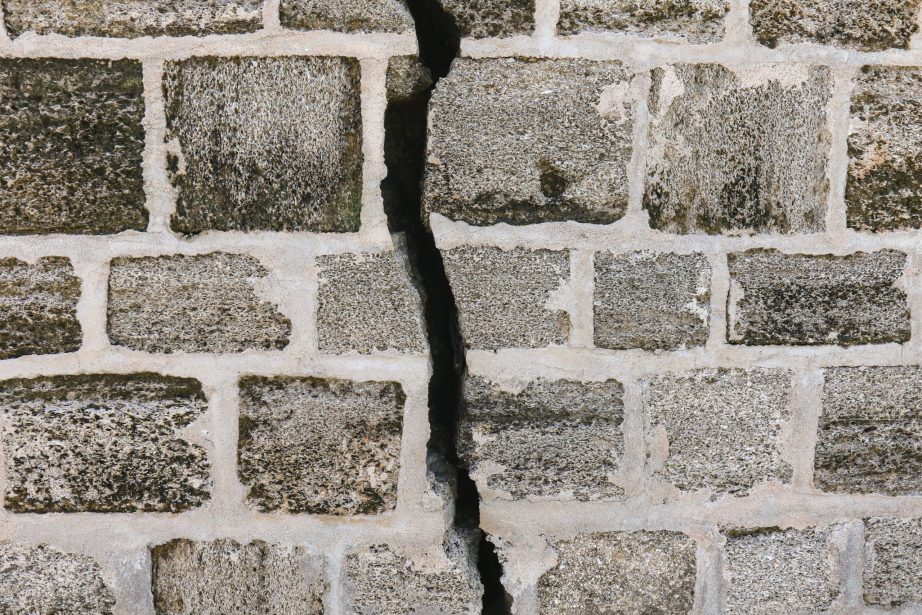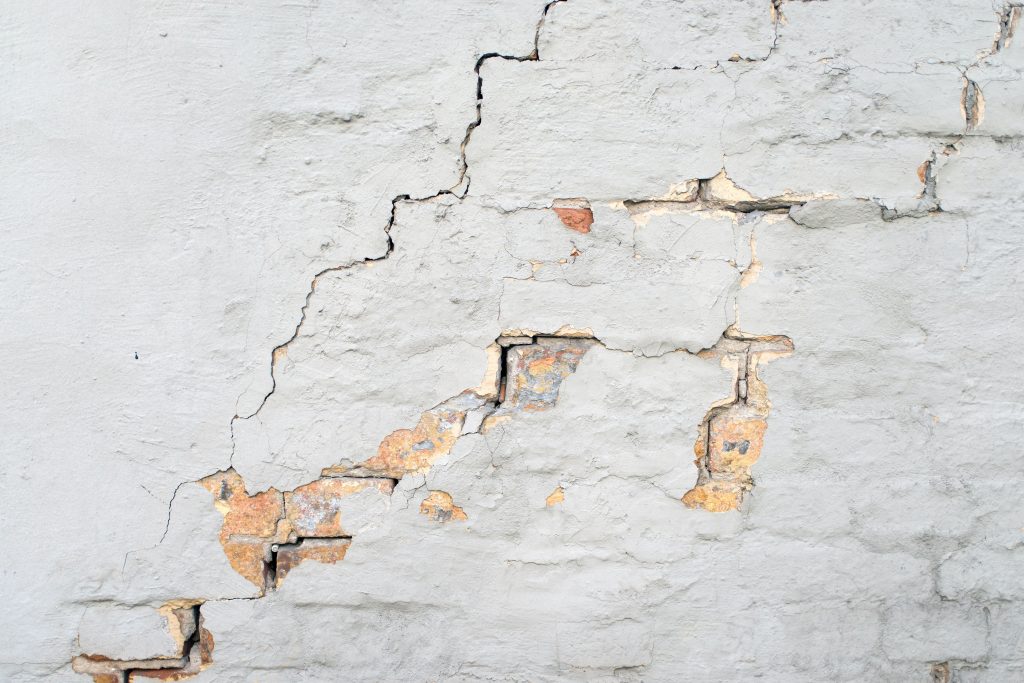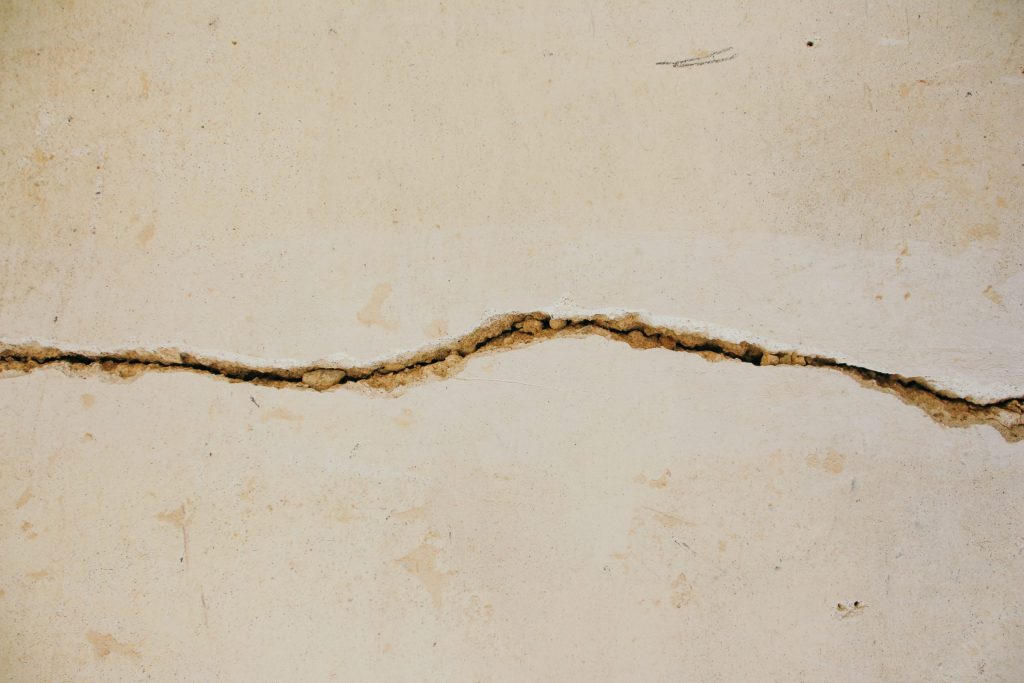There are a few reasons cracks might appear on your walls and so we are going to go over the possible different causes and what you might need to do (or not do) about it.
SWJ Consulting are structural engineers based in Witney, Oxfordshire and cracks appearing in walls and ceilings are certainly one of the homeowner’s biggest concerns, however, unless the crack is wider than 5mm and has been steadily growing, we would probably not have structural concerns. So, the first thing to do if you notice a crack is to measure it and monitor it over time. Take photos, mark with a pencil, and add a date regularly so you have a record. You can purchase a small crack measurer for less than £10 that can help.
Some cracks might just be aesthetic and so easily fixed, but some might be an indication that there is a more serious issue. Movement is what causes cracks. Tree roots or large shrubs removing water from the ground causing it to shrink, leaking water, or waste pipes can cause the ground to swell – and so your walls might move as a result. A missing roof tile could lead to an ingress of water and therefore movement (due to swelling) in the beams, trusses, or walls of your home. Not all movement is catastrophic, plaster will move on a wall as it dries and walls will naturally expand and shrink depending on the weather. We are all aware that wood swells when wet, this is why old wooden windows and doors are more difficult to open and close in wet weather, the ground under and around your home and its walls are no different. It swells and contracts depending on the amount of groundwater.
Cracks on external walls should always be investigated as they can be a sign of structural issues and they can also be letting in water. If a crack has been repointed and not reopened, then this is an indication that movement has stopped. In old houses doors, windows and floors may have ended up at odd angles but provided they are no longer moving it is likely they have stabilised. This is why monitoring is important.
Ceiling cracks should also be investigated immediately and from above – by lifting floorboards and examining the joists. Cracks in ceilings can have disastrous results and are often caused by structural movement, failure of the joists from damp problems, or insect infestation. However, they can also be caused by shrinking plaster, so keep reading before you rip up any floorboards.
Here are some things to think about or investigate if you find a crack in your walls or ceiling.
The age of your home
In new homes, fine cracks might appear as the building settles onto its foundations. These should not continue to grow and can be filled and pained over. If the cracks reappear after filing, that is the time to keep investigating probable causes and maybe consult a structural engineer.
Old buildings are generally constructed with materials like stone, brick, timber, and earth (cob or wattle and daub) and held together with earth or lime-based mortars have an allowance for some movement. Cracks often develop when inflexible modern materials like plaster or render are applied to the older flexible walls, in this case, cracks less than 0.8mm are usually superficial. However, if you notice a crack develop and then grow, especially from the ground up getting wider as it moves up the building, this could be a structural failure or movement caused by damp – the cause of which should be investigated.
Recent Changes
The most common cause of ‘crack concerns’ are recent changes that need time to settle, or recent plastering that then cracks.
Any changes to the weight of your house, new windows, a loft conversion, or removing internal walls may cause small cracks. The ground is slowly adjusting to the change in the weight of your home – called settlement. These cracks won’t continue to grow and can be filled in.
Plaster shrinks as it dries (the loss of moisture causing movement, resulting in a crack). Plaster shrinkage is not a cause for concern, it’s an aesthetic issue and can easily be fixed. To reduce the likelihood of your plaster cracking apply it to wet walls and allow it to dry slowly, in the dark, with no open windows.
Differential Movement
Leading on from old and new houses and recent changes, differential movement is where you have different foundation depths next to each other. Perhaps you have added a modern extension to an old house. Cracking can occur where the two meet because they have different rates of movement. Structural engineers should have designed a flexible joint between the two so they can move against each other without cracking, but if that wasn’t the case you may find cracks occurring that you needn’t be concerned about (unless they are 5mm or larger and continue to grow).
Is water getting in?
You can usually tell if you have damp or something is leaking within your home as a dark damp patch will appear on your walls or ceilings, you may also see a crack (caused by the movement caused by the damp/water). If the cracks and patches appear after heavy rainfall this may be an indication that there is a structural issue, that may get worse over time.
If you have cracks on an exterior wall this could be the cause of further damp issues. Modern cementitious mortars are hard and inflexible so they can be quite brittle. Movement can therefore cause hairline cracks that allow rainwater in. Repointing or filing these cracks with a lime mortar will allow for further movement without reopening the crack.
Trees
Do you have growing trees around or near your home? Trees can cause houses to both subside (sink) or lift (heave). A crack is a noticeable symptom of both types of movement.
Trees don’t have to be so close that the roots are burrowing under your home. Their growing roots will be removing moisture from the ground, causing it to shrink, and therefore causing the ground, and your home, to sink – subsidence. Roots can also cause problems with underground pipes and drains resulting in leaks, again causing the ground to move, either by becoming soft and bogey or swelling and lifting your home upwards – heave.
The obvious answer might be to remove the trees, but this could cause even more problems long-term. If you remove the trees causing subsidence you might find the additional moisture that accumulates in the ground, then causes heave. We have written a blog called Subsidence: It’s not always the tree’s fault that goes into more detail about your structural options if you do want to remove the trees. You might consider some tree-management measures such as a root barrier where a deep, narrow trench is dug, and large plastic sheets are inserted to create a barrier between the ground the roots are in and your foundations.
Climbing plants can also be the cause of cracks. Any climbing plants (Ivy is especially guilty) on your home should be monitored, particularly if new cracks are appearing on your exterior or interior walls. Roots and tendrils will find their way into cracks and crevices of your walls and expand forcing the masonry apart.
Subsidence
We have mentioned subsidence above, but there are many other causes than just tree roots. Subsidence is where the ground under your foundations starts to give way and this lack of support causes the walls to drop. Cracking usually appears in a V-shaped pattern. Subsidence can be caused by several things; natural events like drought, tree roots, or heavy frosts can cause the ground to shrink or nearby manmade issues like nearby excavations can cause instability.
Undermining party walls
If you live in a terrace house and cracks over 5mm appear on your adjoining wall investigations need to be undertaken. Your neighbours may be making changes to their homes that are undermining the party walls and causing structural issues for adjoining houses. Illegal (without permissions or building regulations) basement conversions, extensions, and loft conversions are not uncommon and need to be stopped before irreversible damage or catastrophe occurs.
When to call a structural engineer?
Hopefully, you will have a better idea of whether your cracks are anything to worry about. If they have stopped growing, if you notice they are seasonal, if you fill them and they don’t return – you probably have nothing to worry about.
If you have a small crack (under 5mm) that you are concerned about you could consult a Building Surveyor. They look at the building as a whole, as opposed to just the structure and they can advise as to whether a structural engineer is required.
But, if the crack is growing and reaching 5mm in width and you suspect local trees, leaking pipes or a neighbouring excavation is the cause then you are right to be concerned.
If you live within a 60-mile radius of Witney, Oxfordshire then give SWJ Consulting a call on 01993 225085 or email mail@swjconsulting.co.uk and we can come and take a look if it sounds like you have an issue. Our typical charge is £500 (plus VAT) for the initial visit and then between £1200-£1800 (plus VAT) over the next 12 months as we monitor the situation.
If you require further investigations you will need to pay third-party costs for investigations like trial pits and soil samples. Subsidence has insurance implications, so you may need to get your insurance company involved. They may have preferred engineers to use, so be sure to consult them first before instructing any structural engineers or other third parties.
We hope this has been helpful and invite you to read our other blogs tackling home owner’s common concerns and questions.






